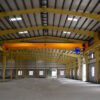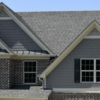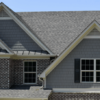In the arena of structure, facades are not virtually the outer shell of a building; they're a critical factor that defines its individual and interplay with the surroundings. With the growing complexity and wishes of present day architecture, modern facde design has emerged as a crucial concern of look at and exercise. This blog put up takes you on a charming journey thru the art work and technological know-how of cutting-edge facades, exploring their evolution, the ideas guiding their layout, and the substances and technology shaping their future.
Introduction to Modern Facde Design Setting the Stage
Architecture is as lots about aesthetics as it is about functionality. Facade format sits on the intersection of those two elements, serving due to the fact the face of a constructing and a crucial element of its structural typical performance. With town landscapes evolving unexpectedly, architects are tasked with growing facades that no longer simplest decorate seen enchantment however additionally provide sensible benefits like energy overall performance and environmental harmony. This task has led to the upward push of current-day facade format as a dynamic and innovative area.
In current architectural speak, the time period "present day facade layout" shows extra than simply smooth appearances. It embodies the use of modern-day-day materials and technology to fulfill the severa wishes of contemporary houses. From improving sustainability to integrating superior constructing structures, facade design performs a crucial position in crafting the identity and efficacy of cutting-edge systems.
This blog publish will manual architects through the intricacies of modern facade layout, providing insights into its current-day trends, annoying situations, and future directions. By expertise the essence of facade format, architects can create systems that stand out for his or her beauty and brilliance.
Historical Perspective Evolution of Facades in Architecture
To appreciate the modern-day landscape of current facade layout, it's far important to look once more at its historic evolution. Facades have constantly been a focal point in architecture, from the grand entrances of ancient temples to the ornate detailing of gothic cathedrals. Each architectural era delivered its specific contact to facade format, reflecting the cultural, technological, and aesthetic values of the time.
The Renaissance duration, as an example, marked a large shift in the direction of symmetry and percentage in facade layout, stimulated by way of classical beliefs. Baroque architecture, instead, embraced drama and grandeur, with complicated facades that captured interest and conveyed strength. The commercial revolution added new materials like metal and glass, paving the way for modernist structure's clean strains and practical paperwork.
Today, the legacy of these historical impacts may be seen in how modern-day architects technique facade format. The challenge lies in balancing lifestyle with innovation, creating facades that recognize the beyond whilst searching toward the destiny. This historical trajectory underscores the significance of facades as a canvas for architectural expression and technological development.
Principles of Modern Facde Design Aesthetic and Functional Aspects
At the heart of present day facade design lies a sensitive stability between aesthetics and functionality. While the visible attraction is paramount, facades need to moreover address practical issues along side environmental overall performance, durability, and user consolation. This dual interest calls for architects to undertake a holistic technique, thinking about elements like fabric preference, structural integrity, and climate responsiveness.
One key principle guiding present day-day facade layout is the emphasis on context. A facade need to harmonize with its environment, reflecting the cultural and environmental trends of its place. This contextual sensitivity ensures that the constructing complements the city material, contributing undoubtedly to its placing rather than clashing with it.
Another essential detail is the combination of era. Modern facde design frequently comprise superior structures for energy efficiency, along with double-skin facades or photovoltaic panels. These technology assist modify temperature, lessen energy consumption, and restriction environmental effect, aligning with the growing emphasis on sustainable architecture.
Ultimately, a fulfillment facade layout calls for a collaborative effort, bringing collectively architects, engineers, and one-of-a-kind stakeholders to craft solutions which are both lovable and functional. This synergy is what defines the art of contemporary facade design, allowing architects to create landmark homes that encourage and innovate.
Materials and Technologies Shaping the Future of Facades
The evolution of substances and technologies has been instrumental in redefining modern facade format. Today, architects have get entry to to an array of innovative materials that offer unparalleled flexibility, sturdiness, and sustainability. From excessive-performance glass to engineered composites, those materials permit the advent of facades that push the bounds of architectural layout.
One extremely good style is using mild-weight and efficient substances that reduce the general carbon footprint of houses. For instance, advances in smart glass era permit for dynamic control of moderate and heat, enhancing electricity efficiency at the equal time as retaining aesthetic enchantment. Similarly, engineered wooden and composite substances provide sustainable alternatives to traditional cladding options, balancing ecological worries with structural standard performance.
In addition to materials, emerging technologies are gambling a vital function in shaping modern-day facade layout. Building Information Modeling (BIM) and digital fabrication techniques have revolutionized the layout process, permitting architects to visualize and optimize facades with precision. These equipment facilitate collaboration and experimentation, leading to more present day and green facade answers.
The integration of materials and technologies continues to comply, offering architects new possibilities for creativity and sustainability. By staying abreast of these traits, architects can harness the complete capability of contemporary facade layout, crafting houses that stand as icons of ingenuity and improvement.
Case Studies Iconic Buildings with Innovative Facade Designs
Several iconic homes round the sector show off the energy and ability of modern-day facade format. These structures function benchmarks of innovation, illustrating how thoughtful facade design can increase structure to new heights. By studying those examples, architects can benefit treasured insights into the requirements and practices that define a fulfillment modern-day facades.
One such example is The Shard in London, designed with the aid of Renzo Piano. This skyscraper features a tapered glass facade that displays the sky and cityscape, developing a dynamic visible revel in. The Shard's layout includes advanced glazing technology to optimize electricity overall performance, even as its fragmented shape pays homage to London's ancient structure.
Another high-quality case is the Bosco Verticale in Milan, designed via Stefano Boeri. This unique residential tower is characterised via its vertical wooded place facade, with over 900 timber covered into the constructing's form. The facade not most effective complements aesthetics however additionally improves air best and biodiversity, demonstrating the capacity of inexperienced structure.
Lastly, the Al Bahar Towers in Abu Dhabi, designed with the aid of way of Aedas, showcase using adaptive facades. The towers function a dynamic shading tool that responds to sunlight, reducing strength intake and enhancing occupant comfort. This modern technique highlights the position of generation in growing wise and responsive facades.
These case studies underscore the importance of creativity and collaboration in modern-day facade format. By drawing thought from those examples, architects can discover new avenues for innovation, crafting facades that captivate and inspire.
The Environmental Impact Sustainable Approaches in Facade Design
Sustainability is a riding pressure in modern-day facade design, with architects increasingly focused on reducing the environmental impact of houses. Facades play a essential role in this strive, influencing factors which includes power intake, fabric use, and waste technology. By adopting sustainable techniques, architects can create facades that contribute to a greener and greater resilient constructed surroundings.
One key method is the usage of passive layout requirements to optimize energy performance. By incorporating elements like shading gadgets and natural air flow, facades can lessen reliance on synthetic heating and cooling systems, minimizing electricity consumption. This approach no longer quality benefits the environment however also improves occupant comfort and nicely-being.
Material choice moreover plays a vital function in sustainable facade layout. Architects are an increasing number of turning to renewable and recycled materials, including bamboo and reclaimed timber, to reduce the carbon footprint of their initiatives. Additionally, transparent photovoltaics and other renewable energy era are being protected into facades, generating easy strength even as improving aesthetic appeal.
Collaboration is critical to reaching sustainable consequences in facade layout. By walking carefully with engineers, environmental experts, and one-of-a-kind stakeholders, architects can make bigger holistic answers that deal with the unique challenges of every challenge. This collaborative technique is essential to growing facades that meet the desires of each present and destiny generations.
Challenges and Opportunities for Architects in Modern Facde Design
While cutting-edge-day facade layout offers interesting opportunities, it also affords unique demanding situations for architects. Balancing aesthetic and practical necessities, handling complex format methods, and navigating regulatory frameworks are only some of the boundaries architects need to overcome. However, the ones demanding situations also present possibilities for innovation and boom.
One most critical mission is the need to mix a couple of disciplines and technology into the layout machine. Facade layout involves collaboration with engineers, environmental professionals, and extraordinary professionals, requiring architects to adopt a multidisciplinary technique. This collaboration can cause modern solutions however additionally needs effective communication and coordination.
Another mission is the balancing act amongst aesthetics and performance. Facades need to meet stringent useful necessities even as retaining visible appeal, requiring architects to carefully do not forget elements like fabric preference, structural integrity, and environmental impact. Achieving this balance is essential to a success facade format and demands innovative problem-solving abilities.
Despite those disturbing situations, current facade layout gives sufficient possibilities for architects to push the boundaries of creativity and innovation. By staying informed approximately emerging tendencies and generation, architects can leverage new gear and substances to craft facades that encourage and satisfaction. This dynamic discipline gives architects the chance to shape the destiny of shape, growing structures that stand as beacons of development and sustainability.
Conclusion Looking Forward to the Next Wave of Facade Innovations
Modern facde design is a testament to the strength of structure to inspire and rework. By balancing aesthetics and functionality, integrating current materials and technologies, and adopting sustainable techniques, architects can create facades that outline the identification and performance of contemporary houses.
Looking forward, the destiny of facade layout holds thrilling opportunities. Advances in digital fabrication, clever substances, and renewable electricity technologies will preserve to shape the world, imparting architects new tools to push the boundaries of creativity and innovation. By staying knowledgeable and engaged, architects can harness those opportunities to craft facades that captivate and inspire.
For architects looking for to discover the capability of modern facade format, collaboration is high. By running intently with engineers, environmental specialists, and different specialists, architects can expand holistic answers that deal with the diverse challenges and possibilities of facade format. This collaborative method is crucial to developing facades that meet the desires of every present and future generations.
In cease, cutting-edge facade format represents a dynamic and thrilling place that offers architects the chance to shape the future of structure. By know-how the standards and practices that define successful facades, architects can create systems that inspire and innovate, leaving an enduring impact at the built surroundings.









